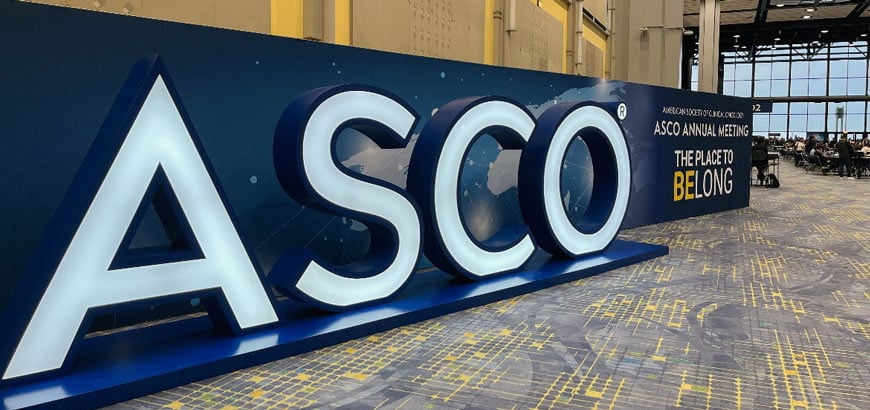
Top insights from the Endpoints at ASCO McKesson leadership panel

Guided by our values, we are an impact-driven organization that improves care in every setting – one product, one partner, one patient at a time.
Through our core commitments, we are leveraging our scale for the greater good, such as serving the needs of our stakeholders, donating back to our communities, protecting our planet, working with policymakers, and more.
Every year, we publish updates to our commitments through our Impact Report.
Download Our Impact ReportOur businesses bring together leading technologies, innovative solutions and hands-on expertise to support the entire healthcare ecosystem.
We distribute pharmaceuticals and medical supplies to healthcare settings across North America, from pharmacies and hospitals to doctors’ offices and clinics.
We help to ensure the financial wellbeing of pharmacies and health systems and support a stable work environment for their employees.
We provide research, insights, technologies and other support to help address challenges in cancer and specialty care.
We provide a suite of solutions designed to address access, affordability and adherence challenges by bridging the gaps between biopharma companies, pharmacies, providers, and payers to help patients get on and stay on their medications.
We offer solutions that enable employers, payers, health-plan brokers and government agencies to provide lower-cost options for prescription medications and therapies.
We help to ensure the financial wellbeing of pharmacies and health systems and support a stable work environment for their employees.
Every year, we publish updates to our commitments through our Impact Report.
Download Our Impact ReportThe science, technology and processes needed to distribute COVID-19 vaccines.
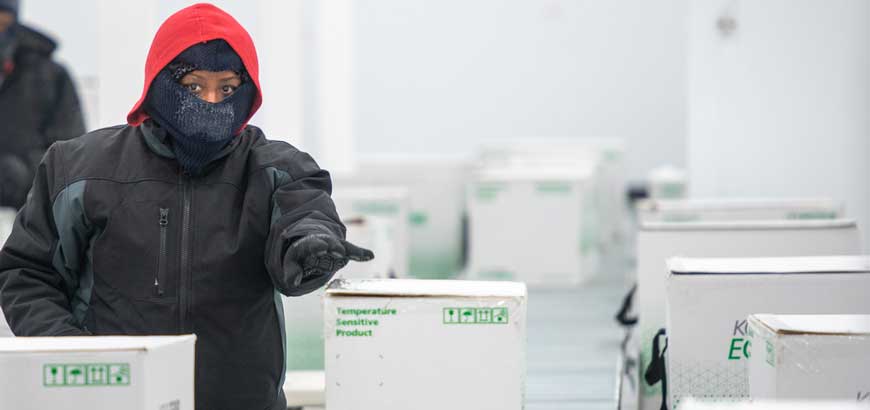
Read time: 4.5 minutes
It is called the cold chain. This is a term that denotes a temperature-controlled supply chain – a series of actions and equipment intended to keep certain products at low temperatures. And when it comes to supporting COVID-19 vaccines, the cold chain is one of the key components at the center of that effort.
The idea of managing temperature controls throughout a supply chain is not a new one. Our grocery stores are filled with frozen food items, meats and produce that are all shipped and stored at temperatures that prevent them from spoiling. And our pharmacies and hospitals receive medications every day that are kept at specific temperatures.
To successfully distribute temperature-sensitive products, the cold chain must account for numerous variables, including what temperature range is needed to ensure a product’s viability, where the product will be shipped, the mode of shipment, and how long the trip will last. McKesson – a leading distributor of medications and medical supplies in the U.S. – has deep experience managing thousands of temperature-sensitive shipments every day. And as a distribution partner for the U.S. government’s COVID-19 vaccine program, the company will soon leverage that expertise when it deploys cold chain processes for the vaccines as well.
McKesson and its partners will employ a variety of technologies and processes to maintain temperature conditions as the COVID-19 vaccines travel along their journey from the manufacturer to McKesson and finally to the point of administration.
“We recognize the importance of managing the cold chain to support our nation through this challenging time,” says Chris Armstrong, McKesson’s vice president, operations. “From our partnership with the Centers for Disease Control and Prevention (CDC), the manufacturers of the vaccines and various technology partners, we’ve built a best-in-class approach to handle the different temperature requirements of the frozen and refrigerated COVID-19 vaccines.”
As part of the clinical development process for the vaccines, each manufacturer determines the temperature requirements to maintain their vaccine’s effectiveness throughout its lifecycle. To ensure that McKesson is prepared to distribute them as soon as they’re approved by the FDA, the manufacturers and CDC have already provided guidance to McKesson on the temperature requirements for the vaccines – either refrigerated (2° C to 8° C) or frozen (-20° C). Pfizer is handling the distribution of its ultra-frozen vaccine directly.
McKesson currently operates as the centralized distributor for the CDC’s Vaccines for Children Program, shipping over 70 million temperature-controlled vaccine doses annually. The company plans to leverage this extensive experience while making the necessary adjustments to account for unique aspects of the cold chain processes for the COVID-19 vaccines.
“What’s particularly unique about the COVID-19 program is the scale,” Armstrong adds. “That’s why we’ve added new distribution centers, hired thousands of people, and adapted our existing processes to execute on the vaccine storage and distribution needs at an extremely high volume.”
“We recognize the importance of managing the cold chain to support our nation through this challenging time.”
The technology required to manage the cold chain often includes specialized equipment, including refrigerators and freezers. Yet for an endeavor of this magnitude, these core items aren’t the ones you could buy at a local appliance store.
“We’ve built custom, large-scale freezers and refrigerators in our distribution centers so we can store tens of millions of vaccine doses at the right temperature,” says Todd Kleinow, McKesson’s vice president, strategic distribution operations. “We’ve also added sophisticated controls, monitoring and alarms so we can make sure the appropriate conditions stay consistent.”
When the vaccines first arrive at a designated distribution center, workers will use monitoring systems to verify the appropriate temperatures were maintained in transit from the manufacturer. McKesson teams will then move the vaccines into either the freezer or the refrigerator for storage prior to distribution.
Once an order comes in from the CDC, material handlers will begin to pick and pack vaccine doses in insulated coolers specially designed to maintain the appropriate temperature.
In addition to using specially designed shipping coolers, each vaccine shipment will include appropriate temperature monitor(s) to validate the temperature during shipment. As an example, for the Moderna vaccine, a digital temperature monitor will be packed inside each cooler to provide those receiving and administering the vaccine the confidence that the vaccine’s cold chain was maintained during shipment.
“All of the technologies we are using throughout the cold chain process have a long-standing track record,” says Kleinow. “And, we have established back-ups of the back-up plans in case we run into any challenges along way.”
After the coolers are packed, the shipments will typically go out within 24 hours from when the orders were first received. Advanced tracking devices will be used for all COVID-19 vaccine shipments to provide the highest level of visibility within the carriers’ delivery networks.
Finally, the hospitals, pharmacies or other care facilities will receive the vaccines and become responsible for storing the doses as indicated by each manufacturer.
“We all understand the importance of making sure that COVID-19 vaccines remain viable until the time they are administered,” says Armstrong. “Helping maintain the integrity of the cold chain is critical to that mission, and McKesson has the breadth and depth of experience, as well as the passion for this important cause to get the job done.”
Originally published December 9, 2020.

Top insights from the Endpoints at ASCO McKesson leadership panel

Enhancing patient access and engagement in clinical trials.
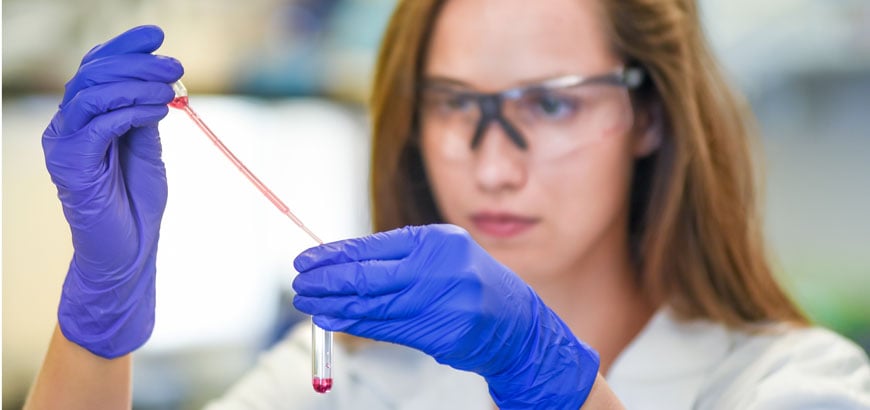
Learn how InspiroGene is helping deliver revolutionary cell and gene therapies to patients in need.

Insights from the 2025 CoverMyMeds Medication Access Report, From Barriers to Bridges
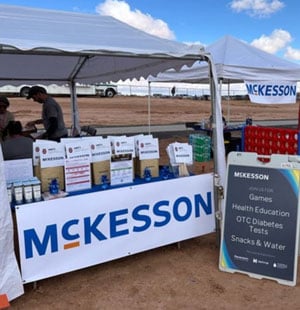
For two years in a row, McKesson has partnered with customers and industry partners to bring health education and awareness of resources to members of the Navajo community.

Learn more about RxOwnership, McKesson’s strategic consultants who help independent pharmacy owners navigate challenges, optimize operations and achieve financial health.

Learn about McKesson’s new Cell and Gene Therapy (CGT) brand, InspiroGene, and the launch of a first-of-its-kind report about the CGT landscape and its future trajectory.
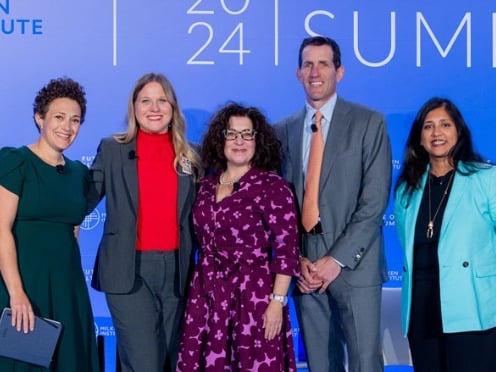
Milken Institute Future of Health Summit panelists address critical industry challenges and explore ways to futureproof the pharmaceutical supply chain.

Learn how pharmacists are transforming patient health across settings.
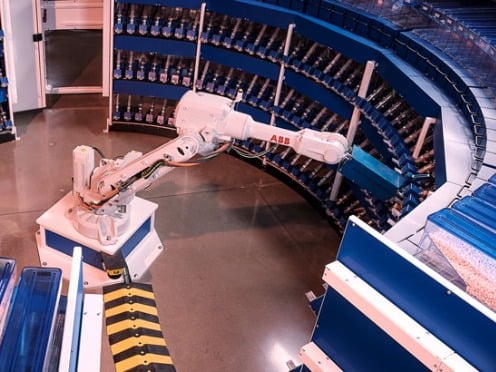
Learn how the CoverMyMeds Pharmacy dispensing network enhances patient care and streamlines prescription fulfillment.